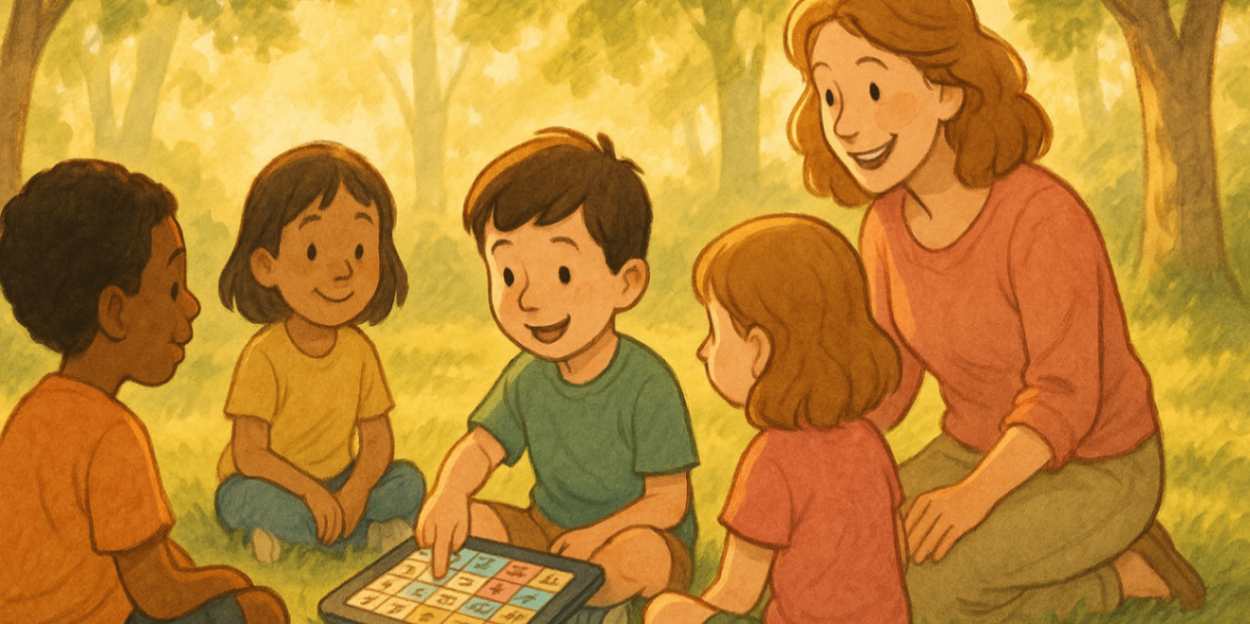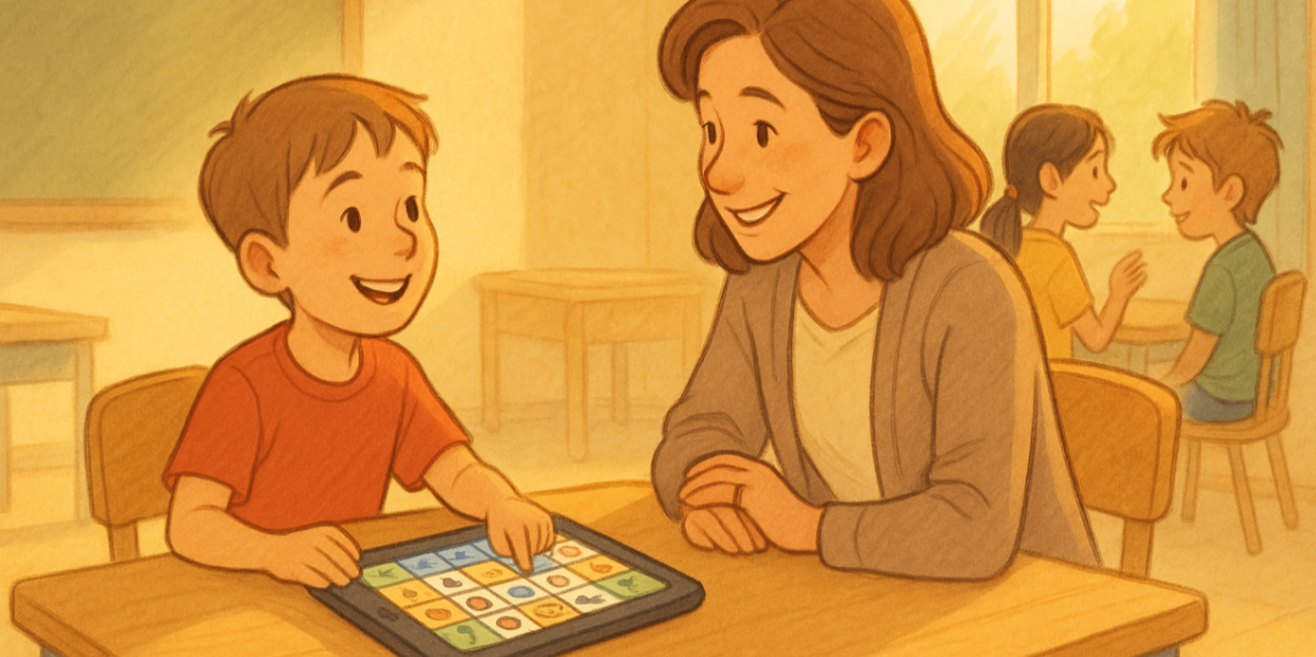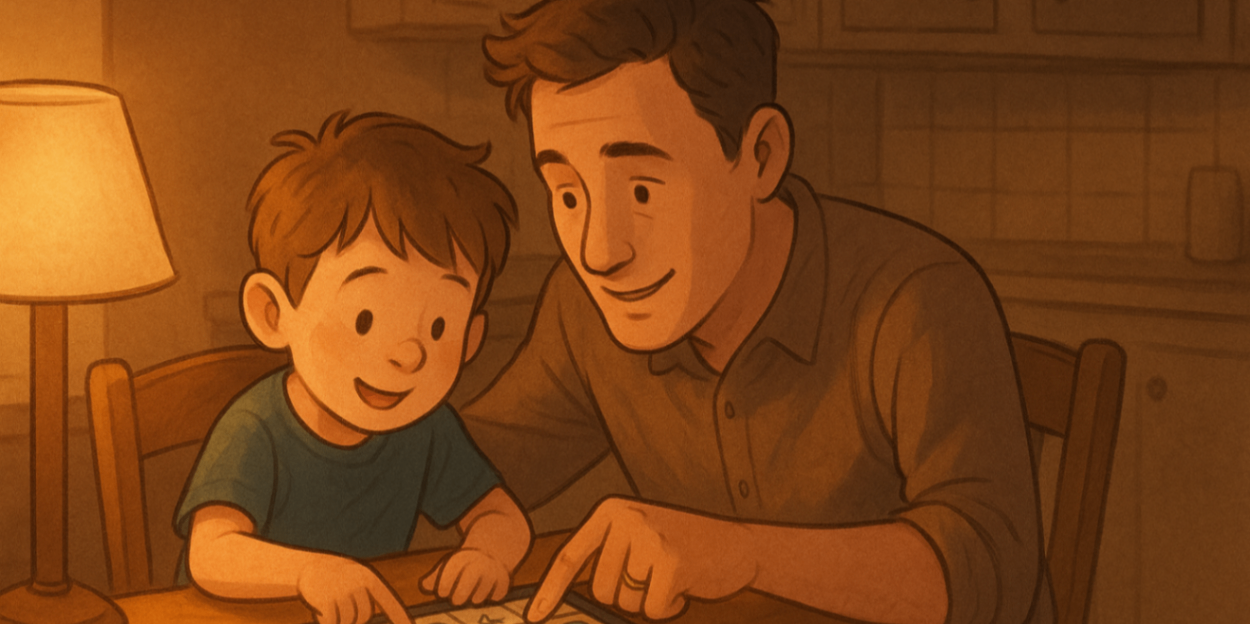
aac in speech therapy: supporting children’s communication
12 September, 2025
Every child deserves a voice. For children who have difficulty speaking, finding a way to communicate their thoughts, needs, and feelings is essential for their development and well-being. This is where Augmentative and Alternative Communication (AAC) comes in. Through specialised speech pathology services, children can access tools and strategies that open up their world.
If you’re exploring ways to support a child with unique communication needs, understanding how AAC can enhance their language skills is a powerful first step.
Key Highlights
-
Augmentative and Alternative Communication (AAC) offers children with communication needs another way to express themselves beyond speech.
-
AAC systems can range from low-tech options like communication books and sign language to high-tech speech-generating devices.
-
Speech pathology services are crucial for assessing a child’s needs and selecting the most suitable AAC solution.
-
AAC supports children with conditions including developmental disabilities, autism, and cerebral palsy by boosting language skills.
-
Using alternative communication does not prevent speech development; research shows it can actually encourage verbal skills.
-
Family involvement and consistent use at home are key to successfully integrating AAC into daily life.
What Is AAC in Speech Therapy?

AAC stands for Augmentative and Alternative Communication.
-
“Augmentative” means it adds to or supports a person’s existing speech.
-
“Alternative” means it provides a different way to communicate when speech is not possible.
In speech therapy, an AAC system is used to bridge communication gaps for children who struggle to speak. A speech pathologist assesses each child to determine the most suitable AAC method, which might include gestures, picture boards, or high-tech devices. The goal is to build confidence and ensure every child can participate in conversations, learning, and social interactions.
Types of AAC Systems Used in Speech Therapy
When exploring the different types of AAC, it's helpful to categorise them into two main groups: unaided and aided. Unaided AAC doesn't require any external equipment; it involves using your own body. This includes gestures, facial expressions, and sign language. Aided AAC, on the other hand, involves using an external tool or device to help communicate.
These aided systems can be further broken down into low-tech and high-tech options. The type of AAC recommended by a speech therapist depends entirely on the child's individual needs, physical abilities, and the environments where they communicate. Often, a child will use a combination of assistive technology and unaided methods. Let's look at these solutions more closely.
Low-Tech Solutions: Boards, Books, and Symbols
Low-tech AAC systems don’t require electricity. They are simple, reliable, and often serve as an excellent starting point.
Examples include:
-
Communication books or boards with pictures and symbols
-
Sign language or keyword sign
-
Body language and facial expressions
High-Tech Solutions: Speech-Generating Devices
High-tech systems include speech-generating devices (SGDs) and specialised AAC apps. These tools give children the ability to press buttons to generate speech.
Examples include:
-
Dedicated AAC devices (e.g. PRC, Saltillo)
-
AAC apps (Proloquo2Go, TouchChat)
-
Mid-tech devices like BigMack buttons
How AAC Supports Children With Communication Needs
Children with a wide range of conditions can benefit from AAC, including:
-
Autism spectrum disorder
-
Cerebral palsy
-
Childhood apraxia of speech
-
Developmental disabilities
AAC can augment unclear speech or provide an alternative for children who are non-verbal. This reduces frustration, builds independence, and supports social and academic success.
Benefits of AAC in Everyday Life and Learning

-
Reduces frustration and challenging behaviours
-
Improves language development (vocabulary, sentence structure)
-
Encourages participation in school and social life
-
Increases confidence and willingness to interact
Myth Busted: AAC does not delay speech. Research shows it often encourages verbal attempts by reducing pressure and giving children a reliable way to communicate.
How Speech Therapists Introduce AAC to Children
A speech-language pathologist (SLP) begins with a thorough assessment, then recommends the right system for the child’s needs. Common strategies include:
-
Modeling: adults use the AAC system while speaking.
-
Play-based practice: embedding AAC into fun activities.
-
Gradual integration: allowing children to explore and learn naturally.
Initial Teaching Strategies and Gradual Integration
One of the most effective teaching strategies for AAC is modeling. Just as a toddler learns to talk by hearing adults speak, a child learns to use their AAC system by seeing others use it. The speech therapist and parents will use the device to talk to the child, pointing to the symbols as they speak. This is a form of alternative communication modeling that shows the child how it's done.
The process also involves creating low-pressure, motivating situations for the child to communicate. Instead of demanding, "Use your talker," the therapist might set up a fun activity where the child is naturally encouraged to request a toy or make a comment. This gradual integration helps the child see the AAC system as a powerful tool for connection, not a chore.
At first, a child might just explore the device by pressing buttons randomly. This is a crucial part of the learning process, similar to a baby babbling. Responding to these "accidental" communications as if they are meaningful helps the child understand that their actions on the device have power and meaning.
Customising AAC Approaches for Individual Needs
There is no "one-size-fits-all" AAC system. A key role of the speech therapist is customising AAC approaches to match each child's individual needs. Finding the right AAC device and setup is a highly personalised process that considers everything from the child's motor skills to their literacy level and social goals.
For example, a child who cannot use their hands may need a device with eye-gaze technology, while another may thrive with a simple picture book. The vocabulary on the device is also carefully chosen and organised to be meaningful and accessible to the child, supporting their unique language skills.
This customisation also means that AAC is not just for nonverbal children. It is a powerful tool for individuals with limited or unclear speech. The system can be used to clarify words, expand on ideas, or communicate when speaking is too difficult or tiring. The goal is always to enhance, not replace, any existing speech.
AAC and the NDIS: Funding and Support for Families
Families can access funding for AAC through the National Disability Insurance Scheme (NDIS). An NDIS plan may include:
-
Assessments by a speech pathologist
-
The AAC device itself
-
Ongoing therapy to support use
Other options may include private health rebates, school-provided devices, or local charities.
Related reading: How to Use Your NDIS Plan for Speech Therapy
|
Funding Body/Program |
How It Can Help |
|---|---|
|
National Disability Insurance Scheme (NDIS) |
Provides funding for assistive technology, including AAC devices and therapy, as part of a participant's plan. |
|
Private Health Insurance |
Some insurance plans may offer rebates or cover a portion of the cost for devices or therapy sessions. |
|
Public School Systems |
Schools can sometimes provide a device for a child to use during school hours to access the curriculum. |
|
Local Agencies & Charities |
Various community organisations and charities may offer grants or loaner device programs to families in need. |
How Parents Can Encourage AAC Use at Home

Your support at home is one of the biggest factors in your child's success with AAC. One of the best things you can do is model the use of AAC yourself. Use the device when you talk to your child, even for simple things. If you're offering a snack, press the "snack" button on their device as you say the word. This shows them how the system works in real-life situations and reinforces their communication skills.
Patience and encouragement are also vital. Celebrate every attempt your child makes to communicate, whether it's through eye contact, a gesture, or using their device. Make the AAC system available at all times—don't put it away or save it only for "practice time." By integrating it into your daily routines and conversations, you show your child that their voice, in whatever form it takes, is always valued and heard.
Finding the Right Speech Therapist for AAC
Finding the right professional to guide your family on this journey is essential. You'll want to look for a licensed speech-language pathologist who has specific training and experience in AAC. Not all therapists specialise in this area, so it's important to ask about their expertise when you are seeking speech pathology services. They should be able to conduct a thorough assessment to determine the right AAC system for your child.
When searching for a provider, you can ask your pediatrician for a referral or search for local clinics that specialise in assistive technology, such as Liverpool Speech Pathology or similar centers in your area. A good AAC evaluation team will often include an occupational therapist as well, who can help with the physical aspects of using a device. This collaborative approach ensures all of your child's needs are considered to find the best possible communication solution.
Conclusion
AAC empowers children with communication challenges to express themselves, build language skills, and connect with their world. From low-tech picture boards to advanced devices, speech therapists can guide families in choosing and using the right tools. With NDIS funding available and family support at home, every child can find their voice.
Ready to explore AAC for your child? Book your consultation now or call us today at 02 9133 2500 to get started.
Frequently Asked Questions
Can AAC Replace Speech in Children?
No, an AAC system does not replace or hinder speech development. In fact, research shows that alternative communication can support and encourage verbal language skills. By reducing the pressure to speak, AAC gives children with complex communication needs the confidence to express themselves, which can often lead to an increase in vocalisations and speech attempts.
How Long Does It Take for a Child to Learn AAC?
The time it takes to learn depends on the child's individual needs, the type of AAC system, and the consistency of support. Just like learning to speak, language development with assistive technology is a gradual process. With consistent modeling and practice, a child will begin to understand and use their system effectively.
Where Can I Find Reliable Resources and Guides on AAC?
Your best resource is a speech-language pathologist specialising in AAC, like those at a dedicated clinic such as Liverpool Speech Pathology. Organisations like Communication Matters and the International Society for Augmentative and Alternative Communication (ISAAC) also offer excellent guides and information to improve communication skills with an AAC system.
What types of assistive communication devices are commonly used in speech therapy for children?
Common devices range from low-tech to high-tech. Low-tech options include communication books and picture boards. High-tech assistive technology includes speech-generating devices and specialised apps on tablets. Unaided methods like sign language also serve as an important alternative means of communication for many children.
.svg)












